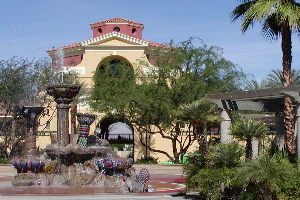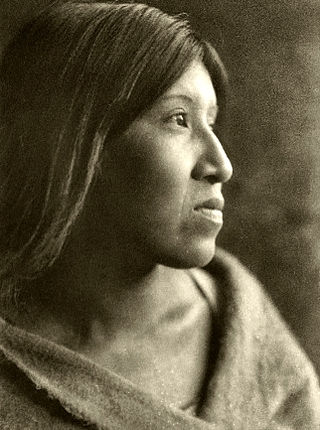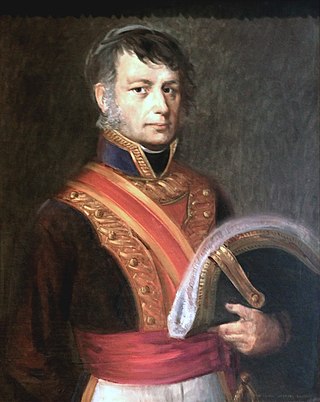
Cathedral City, colloquially known as "Cat City", is a desert resort city in Riverside County, California, United States, within the Colorado Desert's Coachella Valley. Situated between Palm Springs and Rancho Mirage, the city has the second largest population, after Indio, of the nine cities in the Coachella Valley. Its population was 51,493 at the 2020 census, a slight increase from 51,200 at the 2010 census.

The Cahuilla, also known as ʔívil̃uqaletem or Ivilyuqaletem, are a Native American people of the various tribes of the Cahuilla Nation, living in the inland areas of southern California. Their original territory included an area of about 2,400 square miles (6,200 km2). The traditional Cahuilla territory was near the geographic center of Southern California. It was bounded to the north by the San Bernardino Mountains, to the south by Borrego Springs and the Chocolate Mountains, to the east by the Colorado Desert, and to the west by the San Jacinto Plain and the eastern slopes of the Palomar Mountains.
Agua Caliente, Aguas Calientes or Aguascalientes may refer to:
The Agua Caliente Band of Cahuilla Indians of the Agua Caliente Indian Reservation is a federally recognized tribe of the Cahuilla, located in Riverside County, California, United States. The Cahuilla inhabited the Coachella Valley desert and surrounding mountains between 5000 BCE and 500 CE. With the establishment of the reservations, the Cahuilla were officially divided into 10 sovereign nations, including the Agua Caliente Band.

José María Estudillo was a Spanish-born Californio military officer and early settler of San Diego. He is the founder of the Estudillo family of California and served as Commandant of the Presidio of San Diego.

Mission Indians are the indigenous peoples of California who lived in Southern California and were forcibly relocated from their traditional dwellings, villages, and homelands to live and work at 15 Franciscan missions in Southern California and the Asistencias and Estancias established between 1796 and 1823 in the Las Californias Province of the Viceroyalty of New Spain.

The Agua Caliente Casino is a gambling facility, run by the Agua Caliente Band of Cahuilla Indians, in Rancho Mirage, California. The facility has over 45,000 square feet (4,200 m2) of gambling floor. The casino completed a 16-story, 173-foot (53 m) hotel tower which opened on April 18, 2008. The tower is the third-tallest building in the Inland Empire.

Palm Springs is a desert resort city in Riverside County, California, United States, within the Colorado Desert's Coachella Valley. The city covers approximately 94 square miles (240 km2), making it the largest city in Riverside County by land area. With multiple plots in checkerboard pattern, more than 10% of the city is part of the Agua Caliente Band of Cahuilla Indians reservation land and is the administrative capital of the most populated reservation in California.

Joseph Smeaton Chase was an English-born American author, traveler, and photographer. He has become an integral part of California literature: revered for his poignant descriptions of California landscapes. An Englishman who toured the Santa Rosa and San Jacinto mountains in 1915 with his burro, Mesquit, Chase published poetic diary entries detailing his escapades through the Sierra Nevada mountains and California desert.

The Augustine Band of Cahuilla Indians is a federally recognized Cahuilla band of Native Americans based in Coachella, California. They are one of the smallest tribal nations in the United States, consisting of only 16 members, seven of whom are adults.

Frank Mitchell Bogert was an American cowboy, professional rodeo announcer, author, and politician best known as the longtime mayor of Palm Springs, California.

The Agua Caliente Cultural Museum is a culture and history museum located in Palm Springs, California, United States, focusing on the Agua Caliente Band of Cahuilla Indians of the Coachella Valley.
Tahquitz is a spirit found in the legends of the Cahuilla, Kumeyaay and Luiseño Native American people of Southern California. Accounts of the legend vary significantly, but most agree that Tahquitz represents evil or death, and his spirit makes its home on Mount San Jacinto. Some accounts report that he steals people and/or their souls and devours them on the mountain. Tahquitz manifests himself in the form of fireballs, lightning, meteors and thunderous sounds on the mountain and in the canyons.

Tahquitz Canyon is located in Palm Springs, California on a section of the Agua Caliente Indian Reservation. The canyon descends from the Riverside County San Jacinto Mountains. It was continually inhabited for at least 5,000 years by the Native American Cahuilla people, and is one of many canyons of cultural significance to the Cahuilla. Today it is a nature preserve open to the public that is overseen by the Agua Caliente Band of Cahuilla Indians.
Rancho Mirage High School is a secondary school located in Rancho Mirage, California. The school is a part of the Palm Springs Unified School District.

Acrisure Arena is a multi-purpose indoor arena in the unincorporated community of Thousand Palms in Riverside County, California. The arena opened in December 2022 on 43.35 acres (17.54 ha) of land in the Coachella Valley near the city of Palm Desert, between Interstate 10 and the Classic Club golf course. It is the home arena for the American Hockey League's Coachella Valley Firebirds, and is a primary venue for events in the Greater Palm Springs Area. Acrisure, a financial technology company, paid an undisclosed sum for 10 years of naming rights.
Reid D. Milanovich is a Cahuilla politician. Since April 2022, he has served as the Chairman of the Agua Caliente Band of Cahuilla Indians in Riverside County, California He has served five terms on the tribal council.

Agua Caliente Women is a sculpture by Nez Perce artist Doug Hyde, installed in Palm Springs, California.












